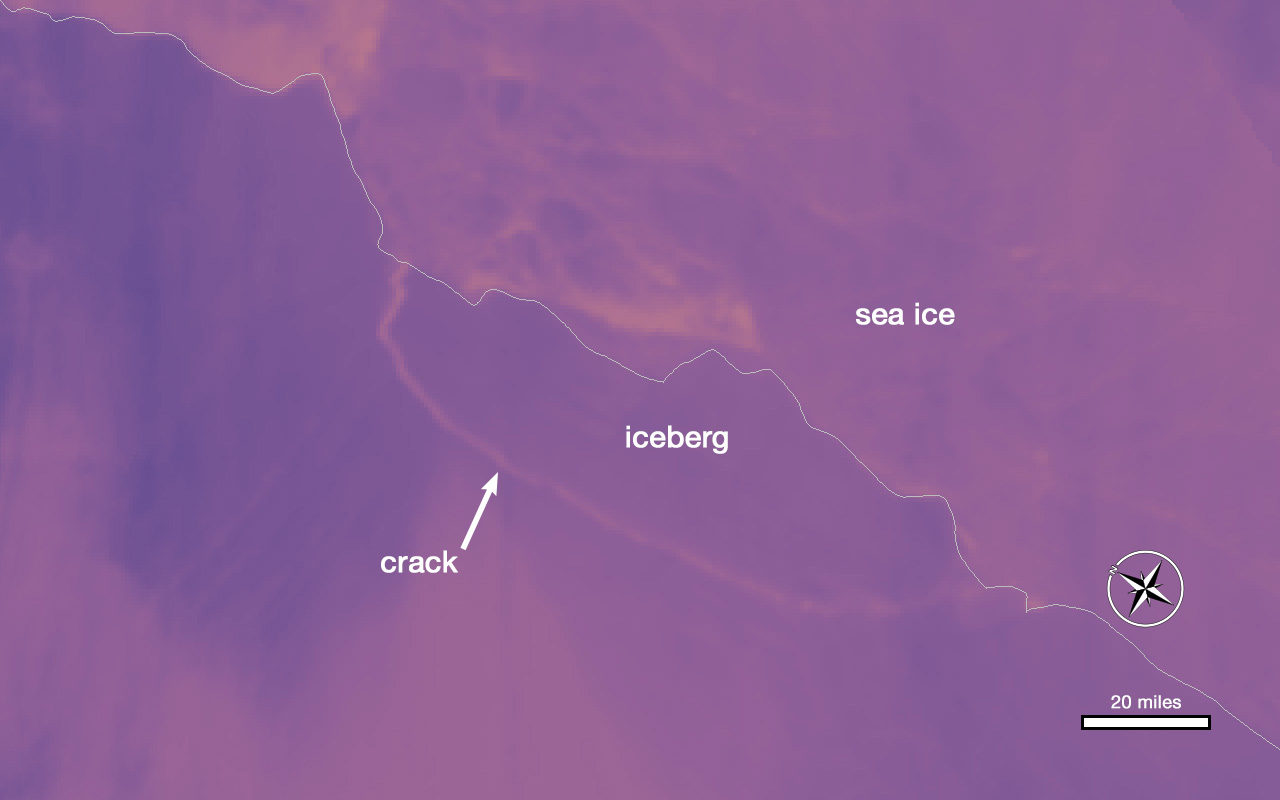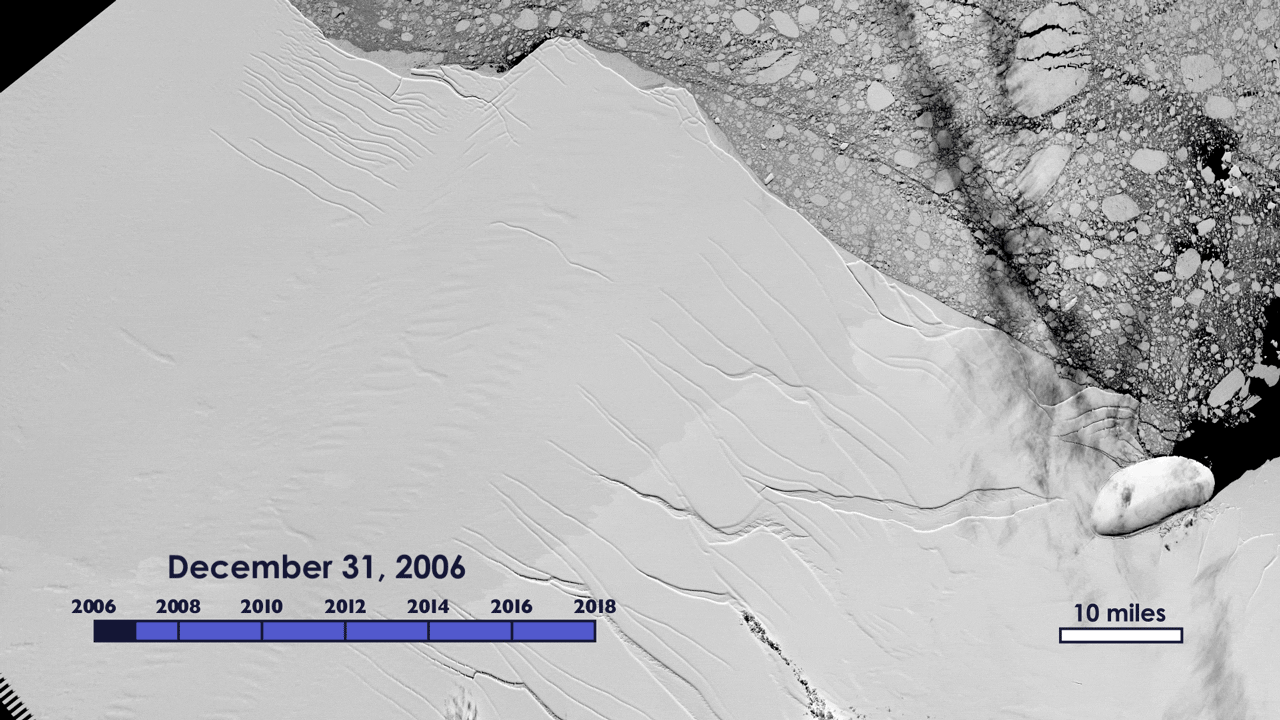One of the largest-ever recorded icebergs broke off of Antarctica sometime between Monday, July 10th, and Wednesday, July 12th, scientists report. On July 12th, NASA’s Aqua satellite captured this image of the iceberg, which is colored to indicate temperatures. The pinker parts are warmer, while the bluer parts are cooler. A pink line indicates the crack between the new iceberg and the ice shelf that it came from:

(Photo: NASA Worldview)
The iceberg has a volume twice that of Lake Erie and weighs more than a trillion metric tons, according to members of Project MIDAS, a United Kingdom-based science team that’s been tracking this part of Antarctica. And the ‘berg break-up has been a long time coming: The animation below, from NASA and the United States Geological Survey’s Landsat program, shows the years-long growth of the crack in the so-called Larsen C ice shelf that eventually led to the iceberg calving into the sea.

(Photo: NASA/USGS Landsat)
Is this break-up related to climate change? Martin O’Leary, a project MIDAS member and a glaciologist at Swansea University in Wales, answered in a statement:
Although this is a natural event, and we’re not aware of any link to human-induced climate change, this puts the ice shelf in a very vulnerable position. This is the furthest back that the ice front has been in recorded history. We’re going to be watching very carefully for signs that the rest of the shelf is becoming unstable.





